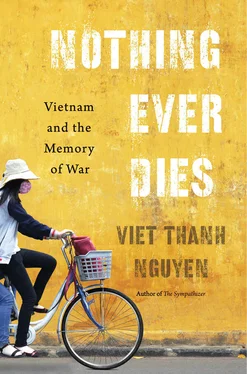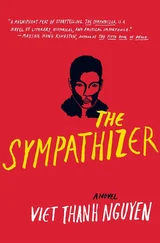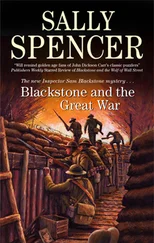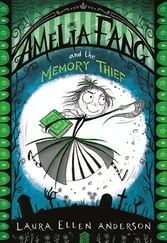The original strategic hamlet program was designed to persuade the peasantry that their best interests lay with the southern government and the Americans, who coerced them into fortified encampments meant to isolate the guerillas from peasant support. In practice, the guerillas infiltrated the hamlets, while the residents often resented the government for forcibly evacuating them from their farms and ancestral homes. While these strategic hamlets were crude, blunt instruments, Little Saigon is an example of American capitalism and democracy operating at a refined level of soft power. If Ho Chi Minh City is now a better place to live than Little Saigon for many of those with privilege, it is because the Communist Party adopted the capitalist practices and consumer ideology of Little Saigon. As strategic hamlet, Little Saigon beckoned for years to the people of the homeland to come to America, as oceanic refugees, as Amerasians, as reeducation camp survivors, as family members reunited through immigration policy, as spouses of citizens. All were marginalized or punished in their homeland under communist rule and chose to flee or migrate to a land that promised wealth and inclusion. But Little Saigon as strategic hamlet is not just physical real estate. It is also mnemonic real estate, for according to the informal terms of the American compact, the more wealth minorities amass, the more property they buy, the more clout they accumulate, and the more visible they become, the more other Americans will positively recognize and remember them. Belonging would substitute for longing; membership would make up for disremembering. This membership in the American body politic would be made possible not only by economic success, but also through winning those political and cultural rights of self-representation denied to the exiles and refugees when they lived under communism. Memory and self-representation are thus inseparable, for those who represent themselves are also saying this: remember us.
The Vietnamese in America understood that strength and profit came in the concentration of their numbers. Thus, like other new arrivals, they gathered themselves defensively into ethnic enclave, subaltern suburb, and strategic hamlet, those emergent landscapes of the American dream distinct from the sidelined ghetto, barrio, and reservation of the American nightmare. Enclave, suburb, hamlet, ghetto, barrio, and reservation are examples of lieux de memoire , the sites of memory that have, in the modern age, substituted for history, or so says scholar Pierre Nora. 25American society created these particular lieux de memoire through centuries of warfare, exploitation, appropriation, and discrimination, practices that tell the inhabitants of these sites to remember their place. These inhabitants also tell themselves to remember their place. They understand that if they have any hope of being remembered by Americans, they must remember themselves first. For Vietnamese refugees, the most important anniversary is April 30, the date of Saigon’s fall, which they call Black April (although white is the color of mourning in Vietnamese society, calling this day White April would likely offend, or at least confuse, white Americans, around whom the Vietnamese in America are usually on their best behavior, polite at the least and often solicitous at the most). On Black April, hundreds of veterans of the Republic of Vietnam’s military forces gather at the Vietnam War Monument located in Freedom Park on All American Way in Garden Grove, Orange County. A portable memorial showcases photographs of communist atrocities and ragged boat people. Commemorative wreaths decorate a shrine honoring dead soldiers. Speeches are given by local politicians and former generals and admirals, one of whom, during the memorial’s dedication in 2003, proclaimed the invasion of Iraq to be an extension of the Vietnam War. Once again, America was defending freedom, a claim with which no one disagreed. The national anthems of both the United States and the Republic of Vietnam play as honor guards march forth with the flags of both countries, parading before veterans displaying themselves in recreations of their old uniforms. The veterans are senior citizens, their supporters numbering in the several thousands at the dedication and in the several hundreds in subsequent years. Theirs is a ferocious display of patriotism, at once spectacular and yet small, inadvertently showing what Vladimir Nabokov calls the “gloom and glory of exile.” 26
This gloom and glory arises from how loss has stung exiles and the related breeds of refugees, immigrants, and minorities. They have lost their countries of origin, either by choice or circumstance, and their hosts often see them as others. This sense of loss and otherness inflects their memories differently from the memories of majorities. For majorities, the ethics of remembering one’s own can range from heroic to antiheroic. The power and privilege of being the majority usually provides enough security to allow the antiheroic, although this is not always the case, as in authoritarian societies where the state’s near-total grasp of power paradoxically breeds a great insecurity about power. In a related fashion, for those who see themselves as marginalized, dominated, excluded, exploited, or oppressed, the antiheroic takes time to develop. This is because weaker populations can ill afford to seem less than powerful to the powerful. Thus, the ethics of remembering one’s own as practiced by the less powerful is usually done first in the heroic mode. Their longing for their past is what scholar Svetlana Boym calls “restorative nostalgia,” the desire to reproduce, wholesale, what once was. 27Only later, when the less powerful feel more secure in their host country, or after they give up on the host country’s promises, does the antiheroic mode flourish in stories of the morally flawed or culturally inassimilable. The antiheroic mode has not yet, for the most part, developed among the Vietnamese in America, with one of the most visible exceptions being the writer Linh Dinh, of whose grotesqueries I will say more later. Otherwise, Vietnamese American art, literature, and film, while often depicting the troubles of refugee life and the haunting past, nevertheless prefer the beautiful to the grotesque and the heroic to the antiheroic. Collectively, Vietnamese American culture, for better and for worse, foregrounds the adaptability of the Vietnamese and the promise of the American dream, albeit with some degree of ambivalence.
For these Vietnamese exiles in America and many of their descendants, remembering one’s own takes place in relationship to, and often antagonism with, the national projects of remembering one’s own in Vietnam and America. These projects often ignore them and when they do notice them, usually cast them in less than heroic terms. So it is that Vietnamese Americans, for now, insist on the heroic mode in remembering themselves. Since the most heroic are the dead, perhaps the most symbolic way these ethical practices of remembering can be reconciled is over the bodies of the dead. But even in pluralist America, the weak and the defeated find themselves rejected. American veterans have rebuffed the request of Vietnamese veterans to be included in their war memorials in places such as Kansas City, and no mention of Vietnamese veterans exists in the Vietnam Veterans Memorial of Washington, DC. 28Arlington National Cemetery would also presumably turn these veterans away if they asked to be buried there. This was what happened, after all, to another American ally, General Vang Pao, leader of the Hmong soldiers who fought for the CIA in Laos during the so-called Secret War (which was, of course, not a secret to the Hmong who fought it, just as the Cold War was not cold to the Asians who killed and died for it). Good enough to die for American interests in vast numbers, good enough to lose their home to America’s enemies, these Hmong soldiers are not good enough to be buried alongside American soldiers. Their deaths, too, will remain secret to American citizens.
Читать дальше












